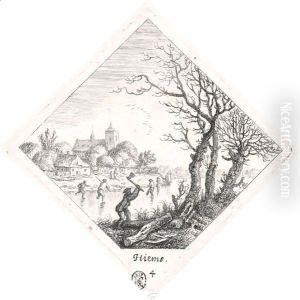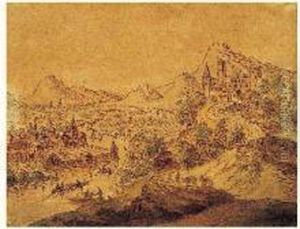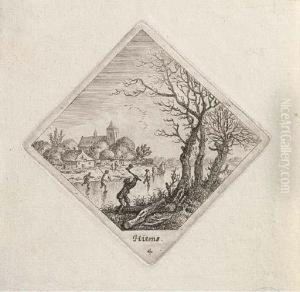Jan Van Almeloven Paintings
Jan van Almeloveen was a Dutch artist born in 1652, in a period marked by the Dutch Golden Age, a time when art, science, trade, and the Dutch military were among the most acclaimed in the world. Despite the brevity of his life, dying in 1683 at the age of 31, van Almeloveen managed to make a significant impact in the art world, primarily through his works as an etcher and draftsman. His contributions are often celebrated for their intricate details and the ability to capture the essence of the Dutch landscape and daily life during the 17th century.
Van Almeloveen was trained in the art of etching and drawing, honing his skills to portray landscapes with remarkable accuracy and a keen eye for detail. Although less is known about his personal life and training, it's believed he was influenced by the works of other Dutch masters of the time, such as Jacob van Ruisdael and Meindert Hobbema, whose works were renowned for their depiction of the natural beauty of the Dutch countryside. Van Almeloveen's etchings often featured rural scenes, waterways, and villages, populated with figures going about their daily tasks, which was a popular theme in Dutch art of the period.
His works were well-received in his time, allowing him to contribute to the rich tapestry of Dutch art history. Unfortunately, due to his early death, Jan van Almeloveen's oeuvre is not as extensive as some of his contemporaries', but the quality and detail of his works have ensured his place in the annals of art history. Today, his etchings and drawings are held in collections worldwide, offering a window into the Dutch Golden Age's pastoral and serene landscapes. Despite the scarcity of biographical details about his life, van Almeloveen's legacy lives on through his art, capturing the essence of 17th-century Dutch culture and landscape for future generations to admire.


